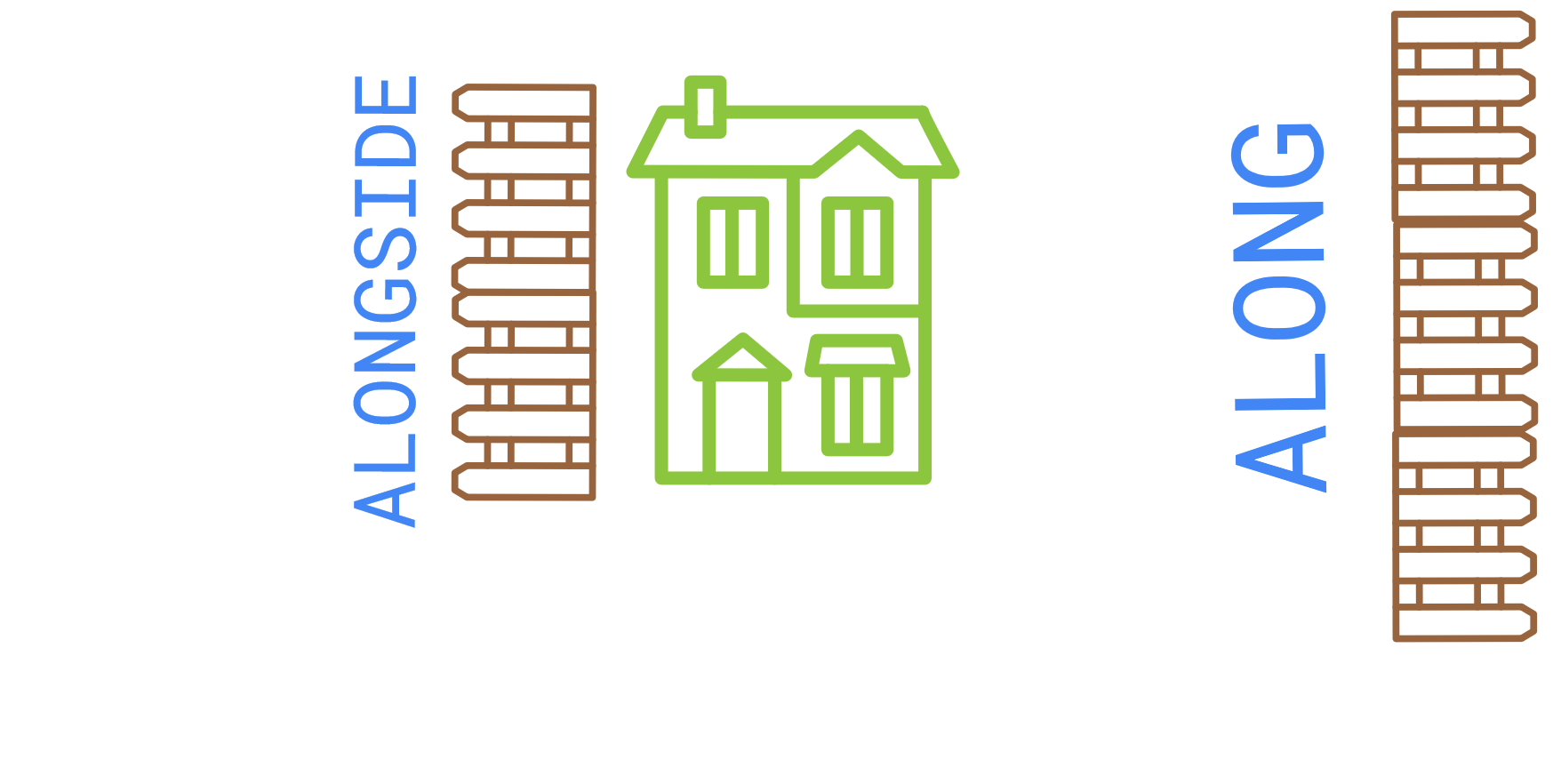How to Use Along and Alongside - Prepositions
There is often confusion about when and where to use along or alongside. While they are quite similar, there is a clear difference in their usage. Alongside is essentially a more specific version of along, used to express that someone or something is positioned directly beside something else, as opposed to simply close to or following the line of.
In the following picture, the fence directly next to and running parallel to the house is alongside it. The fence close to the house and following its line is along it.

Alongside is also used when you want to say that someone or something is directly beside or next to you.
For example:
“He parked his car alongside mine.”
“My daughter walked alongside me to the shops.”
“She works alongside me in the office.”
So, as you can see, alongside is more specific and personal, meaning that someone moved, worked or is positioned side by side, parallel to, or together with you. Along is more general and less personal, focusing more on objects than people, and can be positioned close to something else as opposed to directly beside it. This sentence can perhaps more clearly demonstrate the difference between the two:
“I ran along the beach with my dog, who was running alongside me."